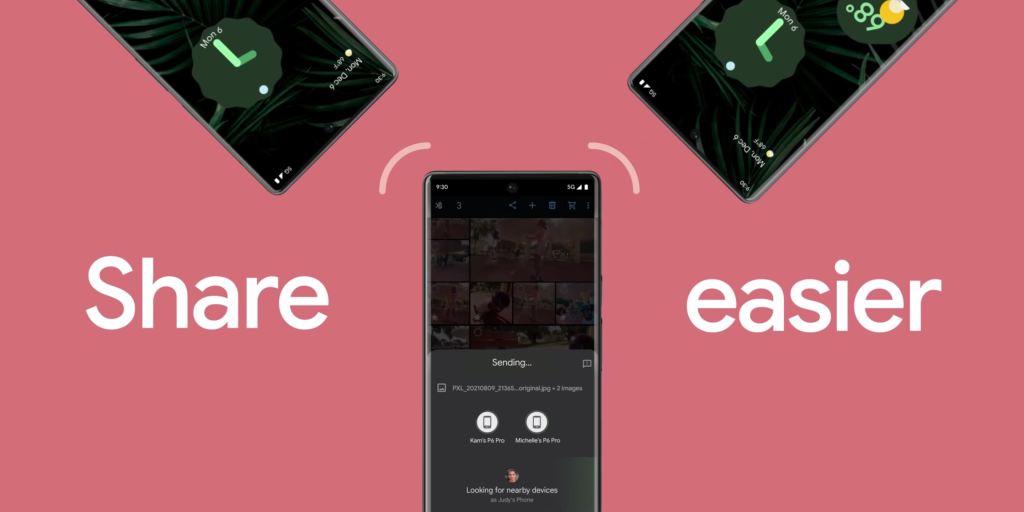
This week, after a massive delay, Google finally started the rollout of Android’s Find My Device network. It’s existing, but it also highlights the fact that Google, and Android as a whole, have severely neglected UWB tech.
UWB or, ultra wide-band, tech is not particularly new. It’s used for very short-range communication. On a large scale, that’s useful for super high-speed connectivity in smaller areas. But where the tech’s limitations are highlighted by that use case, the same weakness also makes UWB particularly good at communicating with nearby devices in a way that lets you know how close things are to one another.
As such, UWB is useful for things like digital car keys or “tapping” nearby devices to interact with them. Android supports these kinds of uses, but it all depends on your device – this use of UWB requires additional hardware outside of cellular radios – as well as what the software can do.
Google hasn’t really done much with it.
As it stands today, there’s essentially nothing you can do with UWB on, say, the Pixel 8 Pro, which supports the tech. That’s despite Google having stuffed the hardware needed for this in the Pixel 6 Pro, 7 Pro, and Pixel Fold as well. One of the very few places it’s currently leveraged is in Quick Share.

And that’s not going to change with the Find My Device network either. While Apple’s AirTags have used UWB since day one to help users pinpoint the exact location of a lost item, none of the AirTag-like trackers that have been announced for the Find My Device network actually support UWB. It’s possible that’ll change in the future, but Google hasn’t even mentioned UWB support for this network yet, so it’s hard to know what the company’s plans are.
There are some developments on the horizon, though.
Top comment by Jay Dub
This article represents the problem. All Android devices aren't the same just because of the platform. It boils down to individual companies and their implementations. The scenario of Apple vs. Android plays into the marketing strategy of Apple. Lump all Android devices together to create weaknesses to make it easier for them to compete in comparisons.
You said it yourself, Samsung has implemented UWB and has their own UWB tracker product. They have a comparable product to Apple using their own app to track their devices. Yet they are being lumped into with Google's failure to deploy this in their line of products. Google's failure is as a manufacturer, not as the platform provider. Each OEM is their own company when it comes to smartphones and products. Just because they use Android OS, doesn't mean they responsible the weaknesses of a competitor.
Ex. ICE vs. EV cars - A Toyota isn't the sames as Nissan just because they are both Japanese made using the ICE platform. Or Tesla being the same as Lucid because they are high-end EV manufacturers.
The OEM overlaying OS even can make the device experience dramatically different. Ex. Samsung offers multi-directional gesture customization with One UI and GoodLock module. Pixel Launcher only uses native Android gestures.
This isn't a weakness of Android. This is simply a manufacturer thing. Google needs some work here. If someone wants an Apple like experience on Android, your only real options Samsung. #allandroidisntthesame
Google has confirmed that the Pixel Tablet will soon support “Tap to Cast” with UWB-compatible Android phones starting this year, and it looks like Pixel Watch 3 will also support the technology for better unlocking of your phone when the two are nearby each other. Those are genuinely useful ways to show off and use the tech in a way that you actually notice.

Of course, Google isn’t the only one guilty here. Back in 2020, Samsung raved about how UWB was going to be a big deal, but it hasn’t gone very far in the time since. The company still only equips its highest-end smartphones with the tech, as well as putting UWB in the Galaxy SmartTag 2 (which doesn’t work with the larger Android Find My Device network).
What does the future hold with UWB on Android? I hope that UWB trackers are in the future, but I really just want to see Google start using this tech, as it seems like the company is finally starting to do. UWB has tons of fun applications, many of which Apple is already using, but it’s just been so sorely neglected.
More on Find My Device:
- You can use these trackers with both Android and Apple’s finder networks
- What headphones will support Android’s Find My Device network
- AirTag-like trackers for Android’s Find My Device network will ship in May
Follow Ben: Twitter/X, Threads, Bluesky, and Instagram
FTC: We use income earning auto affiliate links. More.



Comments